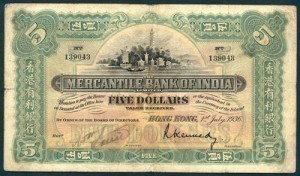Banknote Dimensions
Commonly referred to as paper money or bill, a banknote is a particular  type of negotiable instrument. Banknotes are usually issued by banks to serve as promissory note. They are considered legal tender in various jurisdictions. They come in different sizes depending on the country or place where they are being issued. Although this specific type of instrument is used primarily for higher values, it functions just like money. Aside from these basic details, it is also quite important to know the different banknote dimensions.
type of negotiable instrument. Banknotes are usually issued by banks to serve as promissory note. They are considered legal tender in various jurisdictions. They come in different sizes depending on the country or place where they are being issued. Although this specific type of instrument is used primarily for higher values, it functions just like money. Aside from these basic details, it is also quite important to know the different banknote dimensions.
The Dimensions of Banknotes
The Bank of England issues different kinds of banknotes. These include the 50 British pound denomination, which measures 156 millimeters by 85 millimeters. Meanwhile, each of the new 20 British pound and the old-style 20 British pound denominations measure 149 millimeters by 80 millimeters. The 10 British pound denomination measures 142 millimeters by 75 millimeters. Amongst these, the 5 British pound denomination is the smallest, which only measures 135 millimeters by 70 millimeters.
The European Central Bank also issues various types of banknotes, the biggest of which is the 500 Euro. Available in the color purple, it measures 160 millimeters by 82 millimeters. The 200 Euro denomination has a yellow-brown color, the measurement of which is 153 millimeters by 82 millimeters. The 100 Euro is available in green, which measures 147 millimeters by 82 millimeters.
The orange-colored 50 Euro measures 140 millimeters by 77 millimeters, the blue-colored 20 Euro measures 133 millimeters by 72 millimeters and the red-colored 10 Euro measures 127 millimeters by 67 millimeters. The smallest denomination issued is the grey-colored 5 Euro, the measurement of which is 120 millimeters by 62 millimeters.
In the United States, the available banknotes include the $100, $50, $20, $10, $5, $2 and $1 denominations. Unlike in European countries, these notes have a uniform size. The earlier banknotes were larger in size, the dimensions of which are 189 millimeters by 79 millimeters. In 1929, the physical dimensions of these notes were changed to a smaller 155.96 millimeters by 66.29 millimeters. Until now, these dimensions are still in use.
Additional Facts and Other Interesting Details
The use of banknotes offers a number of important advantages including lower manufacturing cost as well as lower cost of transport. Within a currency union or state, a treasury or central bank is the only one responsible for issuing banknotes. They are commonly made from lightweight materials, specifically cotton fiber paper. To do this, cotton is combined with abaca, linen or other textile fibers. Durable banknote papers are better because they have enhanced mechanical stability and improved protection against various factors including dirt.





